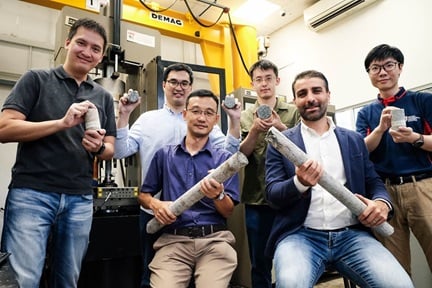New and repowered natural gas plants to be 10% more efficient, hydrogen-compatible: EMA
First published online at The Straits Times

Rethinking mobility: A self-driving minibus in Seoul. Is Singapore next?
SINGAPORE - All new natural gas power plants will likely have to be around 10 per cent more efficient from this year, and be completely hydrogen-compatible in the future.
Experts said the move can help the power sector – which relies 95 per cent on natural gas and is responsible for 40 per cent of carbon emissions currently – decarbonise and move towards its goal of reaching net-zero emissions by 2050.
According to an industry consultation paper from the Energy Market Authority (EMA), new and repowered generation plants that are crucial to meeting Singapore’s electricity demand will be subject to a more stringent emission intensity limit of 0.355 tonne of carbon dioxide emissions per megawatt hour (MWh) of electricity.
This would ensure more carbon-efficient electricity generation without compromising power system reliability, said Mr Law Gee Yong, EMA’s director of policy and planning, in response to queries from The Straits Times.
These new and repowered plants will also need to be at least 30 per cent hydrogen-compatible, and have the ability to be retrofitted to become 100 per cent hydrogen-compatible in the future.
Mr Law said the emissions standard of 0.355 tonne of CO2 emissions per MWh is pegged to the best-in-class technologies, such as advanced combined-cycle gas turbine (CCGT) power plants, which are available in the market.
The emissions standard is based on the average of what is achievable by advanced CCGT models from major original equipment manufacturers in Singapore, he added.
Advanced CCGTs are expected to be about 10 per cent more efficient than the ones in Singapore’s system today, said Mr Law.
“To ensure the power sector is on track to facilitate the transition to net-zero emissions by 2050, EMA will review the emission intensity standard of 0.355 tonne of CO2 per MWh and gradually tighten the standard over time,” he added.
The agency will consult the industry and provide advance notice before tightening the standard to provide sufficient lead time for planning.
As at 2021, Singapore’s average grid emission factor, which measures the average CO2 emissions emitted per unit of net electricity generation in the system, is 0.4057, according to the EMA’s website.
This works out to a 12.5 per cent drop in CO2 emissions with more efficient power plants.
Dr David Broadstock, head of the Energy Economics Division of the National University of Singapore’s Energy Studies Institute, said that while the introduction of the emissions cap will play a role in reducing the overall greenhouse gas emissions from power generation, it will take time for this to come into effect.
This is because emissions from existing power generation units are still closer to 0.41 tonne of CO2 per MWh, he said.
Dr Broadstock added that the industry consultation paper also acknowledges the role that hydrogen may play in the future, adding momentum to Singapore’s goal to have hydrogen power form up to 50 per cent of the country’s future energy needs.
Hydrogen is considered a cleaner fuel as it does not emit any CO2 when burned.
But in order to be considered green, hydrogen would have to be produced through renewable energy such as solar power.
As Singapore continues to integrate different energy sources such as solar power and various electricity imports into its system, it will need to ensure it has generation technologies that can provide greater flexibility and security to the grid, said EMA in its consultation paper.
This may include fast response services and back-up generation, it added.
These generation units tend to be less efficient and have higher emissions than advanced CCGTs.
Therefore, they will not be subject to the same emissions standards if they are mainly used for back-up, as they would not be run as frequently as the natural gas power plants used for electricity generation.
Power generation companies can opt to have their plants assessed by a different set of standards if their new and repowered plants are primarily for non-baseload or back-up purposes.
This will be assessed by EMA on a case-by-case basis, said Mr Law.
He added that EMA has no plans to impose limits on the number of plants that can fall under this category, as they are not expected to form a large share of Singapore’s generation fleet.
Professor Chan Siew Hwa, co-director of the Nanyang Technological University’s Energy Research Institute, said that if Singapore is able to manage its energy usage properly, the use of back-up power generators will be minimised even with the increased penetration of renewable energy.
Therefore, Singapore’s electricity grid would have to be very robust in handling the increasing use of renewable energy, to wean off natural gas and reduce the impact of greenhouse gas emissions, he added.
The closing date for feedback submission on the industry consultation is Feb 9.
The new emissions standards will take effect when a new code of practice on carbon emissions from electricity generation is published this year.















/enri-thumbnails/careeropportunities1f0caf1c-a12d-479c-be7c-3c04e085c617.tmb-mega-menu.jpg?Culture=en&sfvrsn=d7261e3b_1)

/cradle-thumbnails/research-capabilities1516d0ba63aa44f0b4ee77a8c05263b2.tmb-mega-menu.jpg?Culture=en&sfvrsn=1bc94f8_1)






